Though it is only 150 kilometres from my city, Chennai, I have never visited Gingee fort aka Senji fort (செங்கிக் கோட்டை). Today I got the chance during a trip this week with a friend to Salem for a few days. We opted to travel by the GST Road towards Ulundurpet, instead of the Bengaluru Highway via Krishnagiri. We started from Chennai at 8 AM and reached Gingee town in three hours (at 11 AM). To the west of Gingee town is Tiruvannamalai, Tamil Nadu at 30 km, and the same distance to the east is Tindivanam, Tamil Nadu.

Gingee town
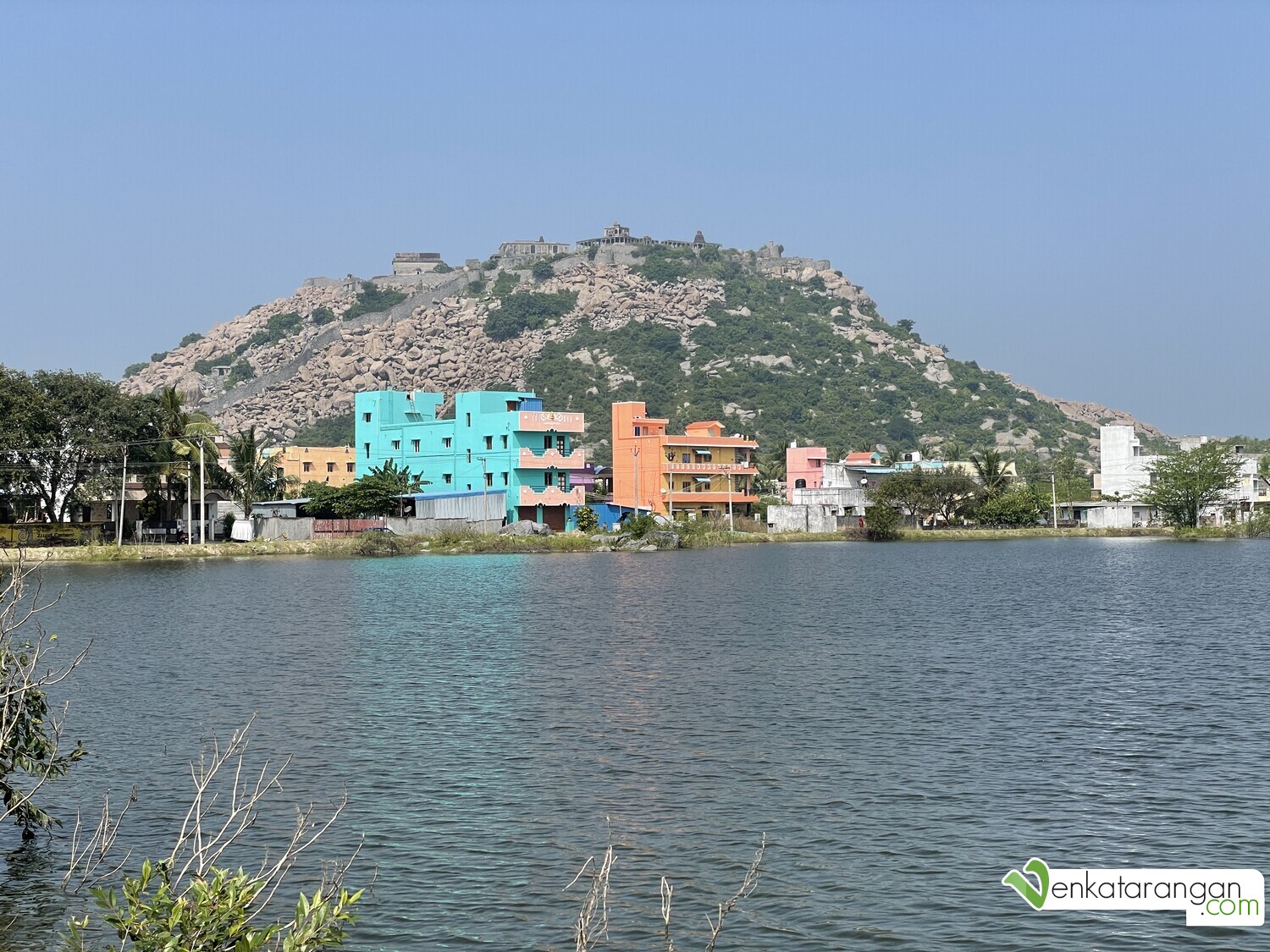
View of Rani fort from a lake on the way from the Gingee town
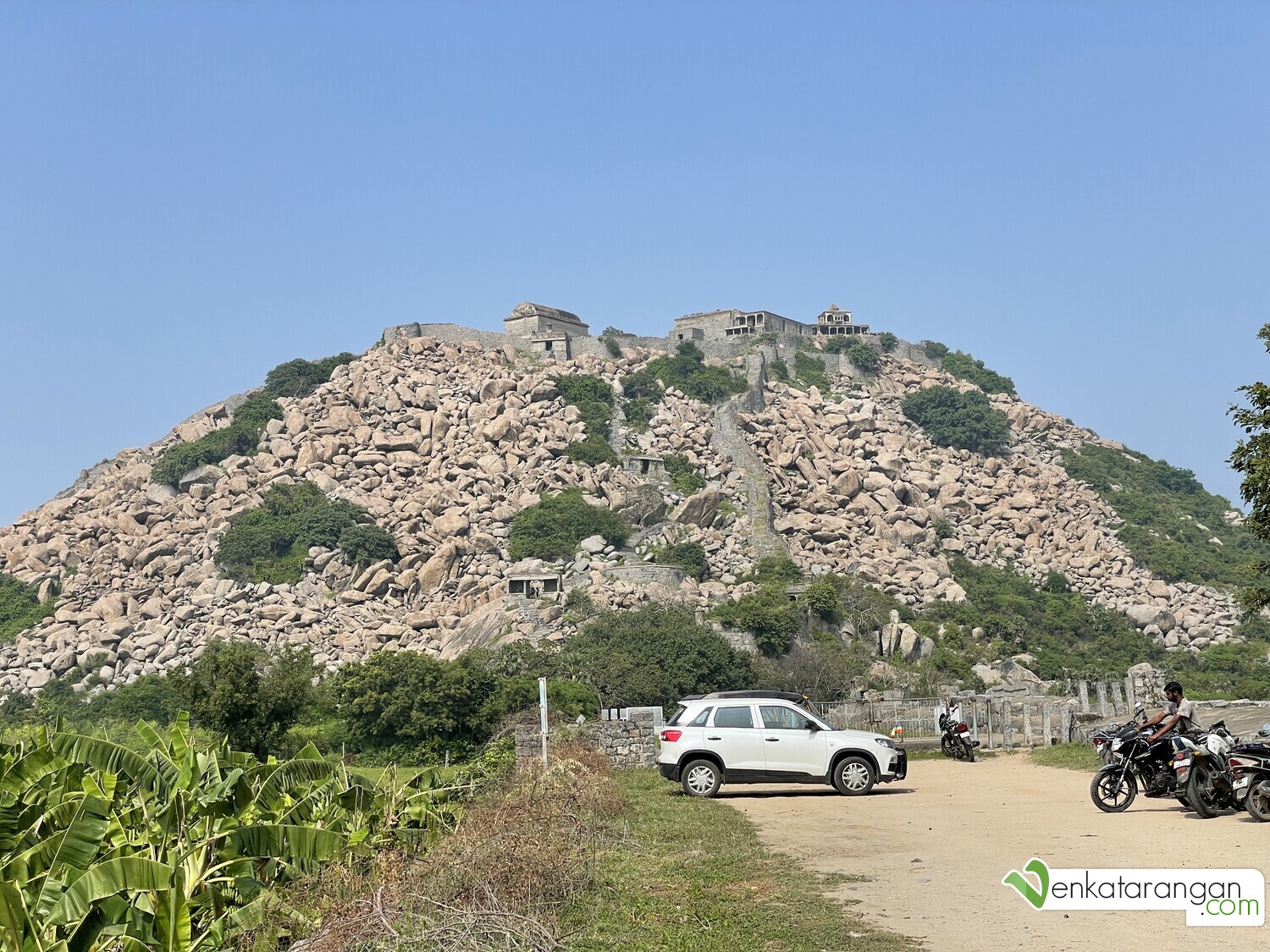
View of Rani fort
History of Gingee aka Senji Fort:
Wikipedia says Gingee fort was ranked by Chhatrapati Shivaji to be the “most impregnable fortress in India”, and it was called the “Troy of the East” by the British. The fort was originally built by Ananta kon of the Konar dynasty around 1190 AD. In 1677 AD, the fort was captured by Subedar Harji Rajemahadik for the Marathas under the leadership of Chhatrapati Shivaji. Then it had been held at various times by the Bijapur sultans, the Moghuls, the Carnatic Nawabs, the French and finally the British who captured it in 1761. The tragic tale of Raja Tej Singh, popularly known in Tamil as Thesingu Raasan, is associated with the fort.

செங்கிக் கோட்டையின் வரலாறு
What did we see here?
There are three hillocks here, but we visited only the larger one, the Rajagiri fort. There is an entry of fee of ₹20 (USD 0.3) which you have to pay online (search ASI GFG in Google) and show the screenshot to the security guards after the entrance. We spent nearly two hours going around and climbing three-fourths of the hill. Had we carried a water bottle with us we could’ve continued our trek and reached the hilltop. There is not much to see, only ruins and a good hike, but was a nice outing.
Remember to carry water with you, a hat if it is summer; there are no eateries inside the fort. The nearest restroom (only one) was near the parking lot outside the fort.
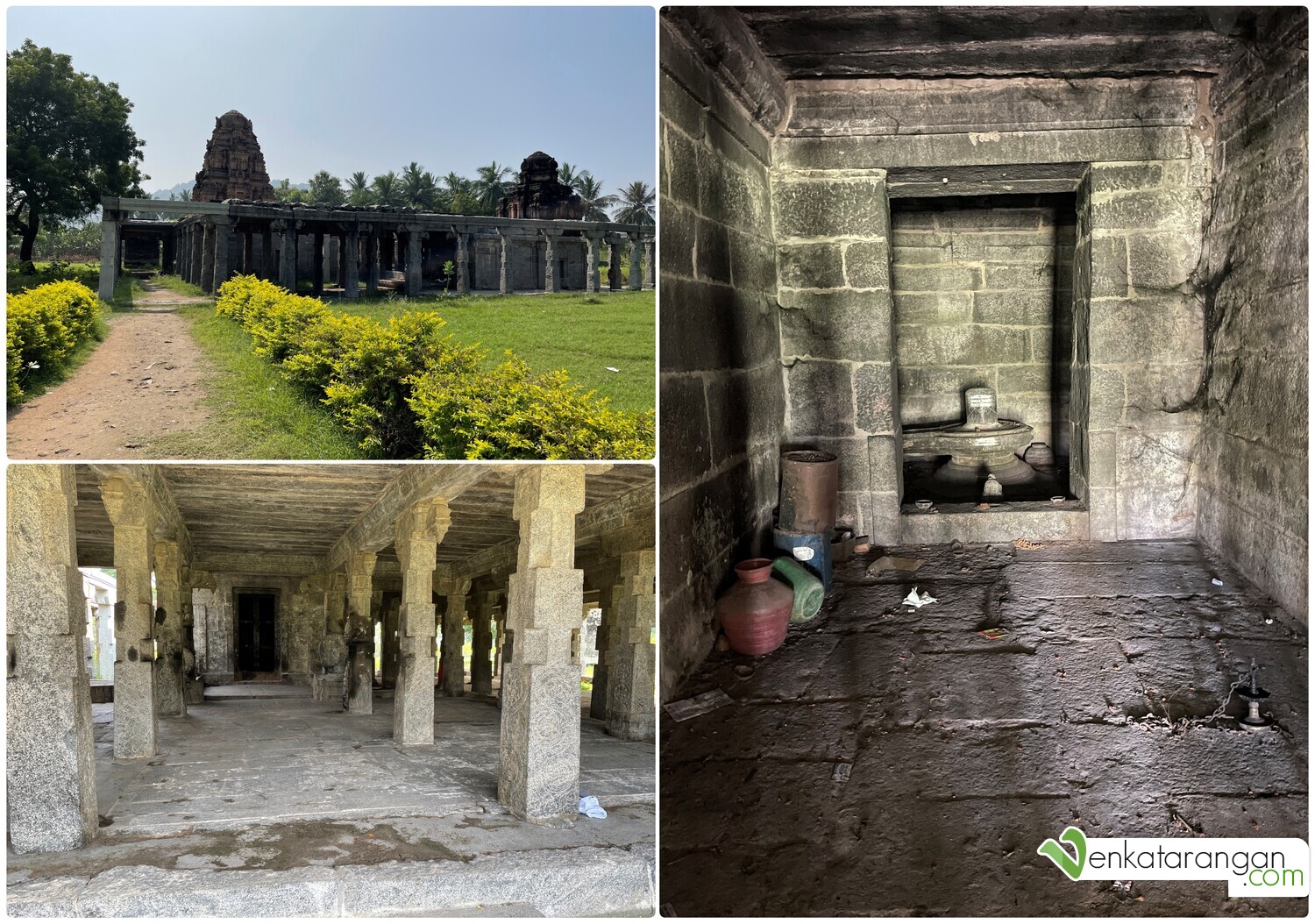
As you enter the complex of Rajagiri fort, you see a temple dedicated to Lord Siva – I suppose regular prayers are not offered here

View of Rajagiri fort from the Siva Temple – we could see the staff cleaning the premises regularly
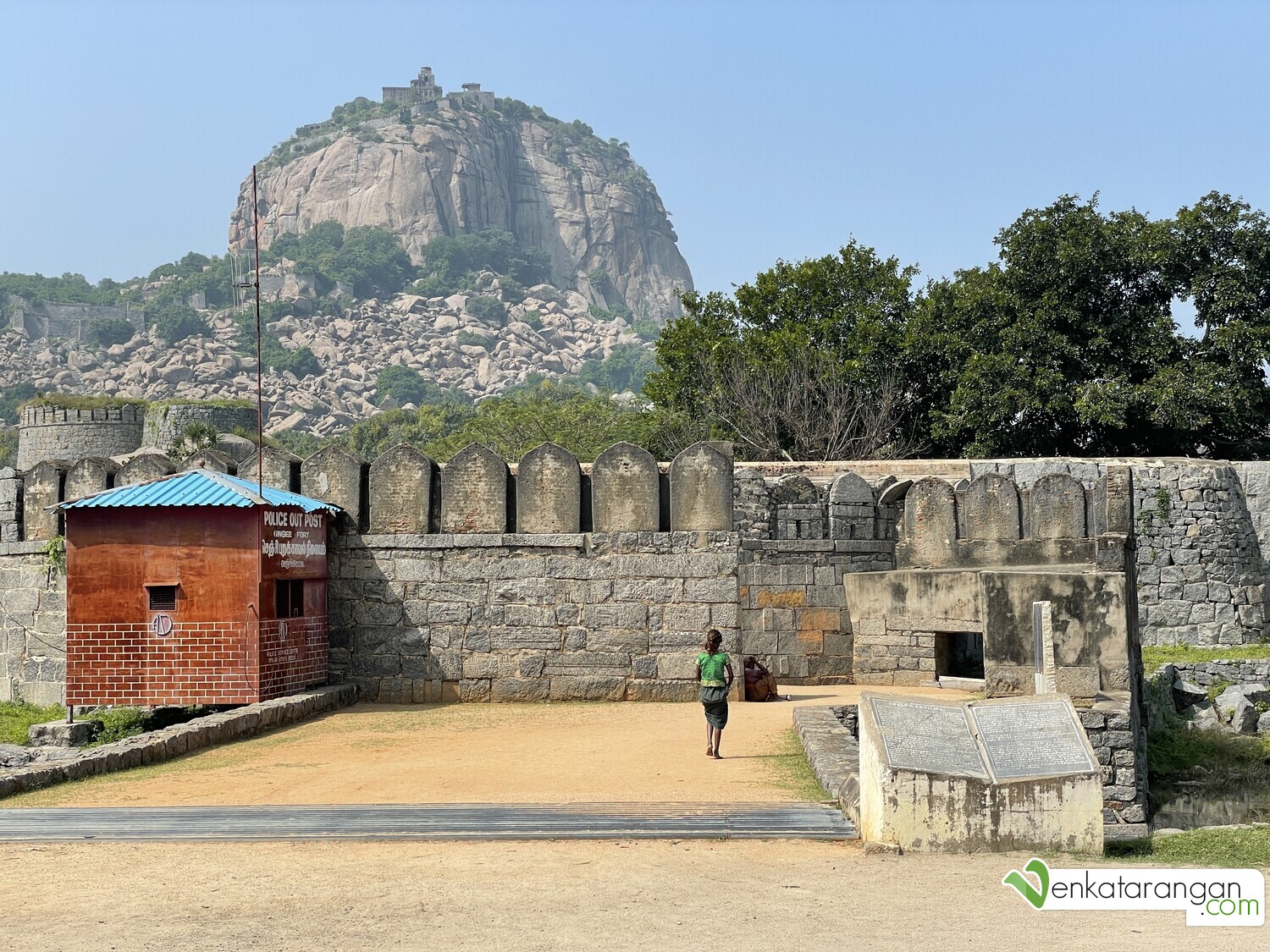
Entrance to Rajagiri fort (Gingee)
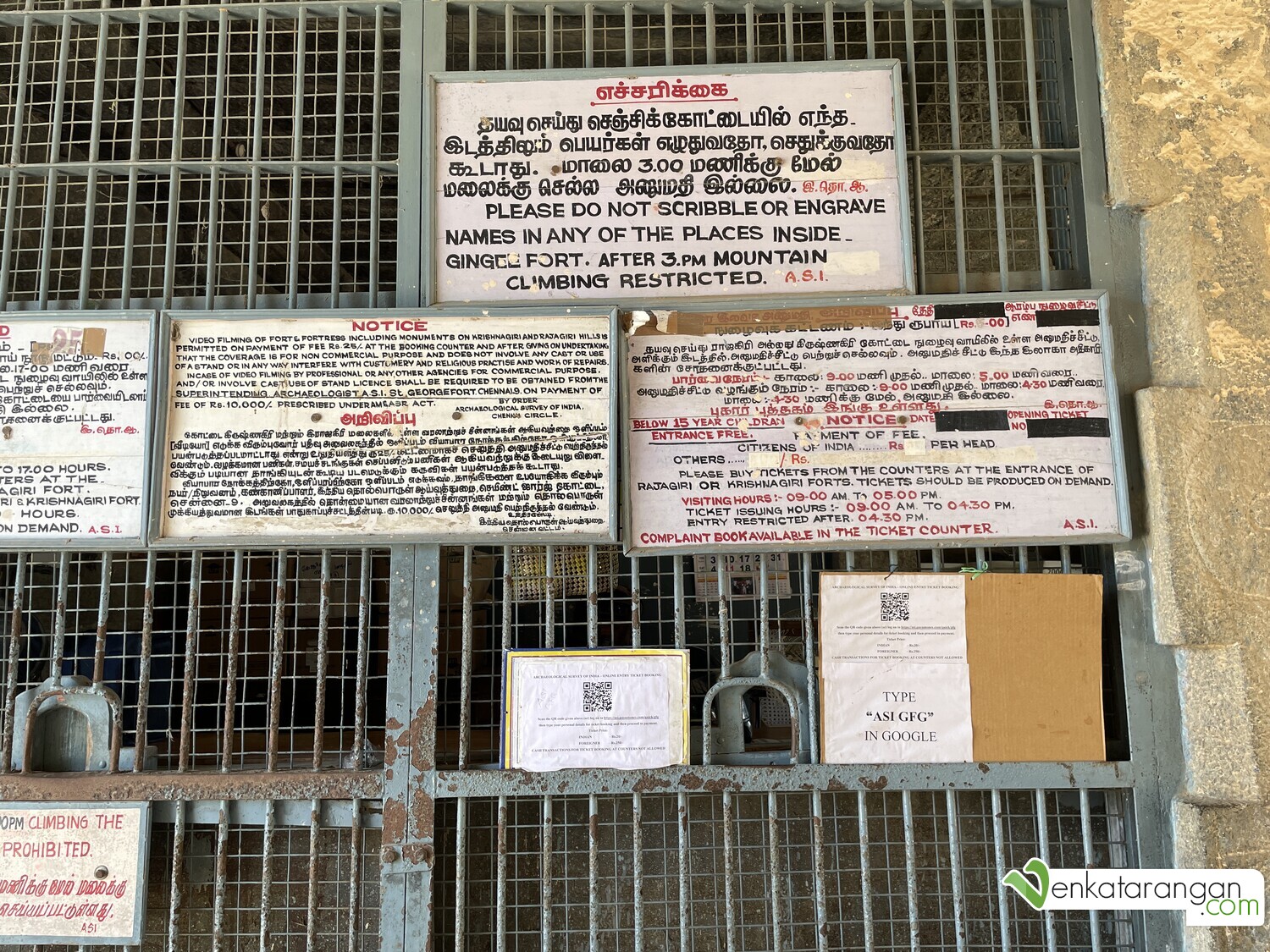
Instructions from the Archaeological Survey of India who maintain the national monument
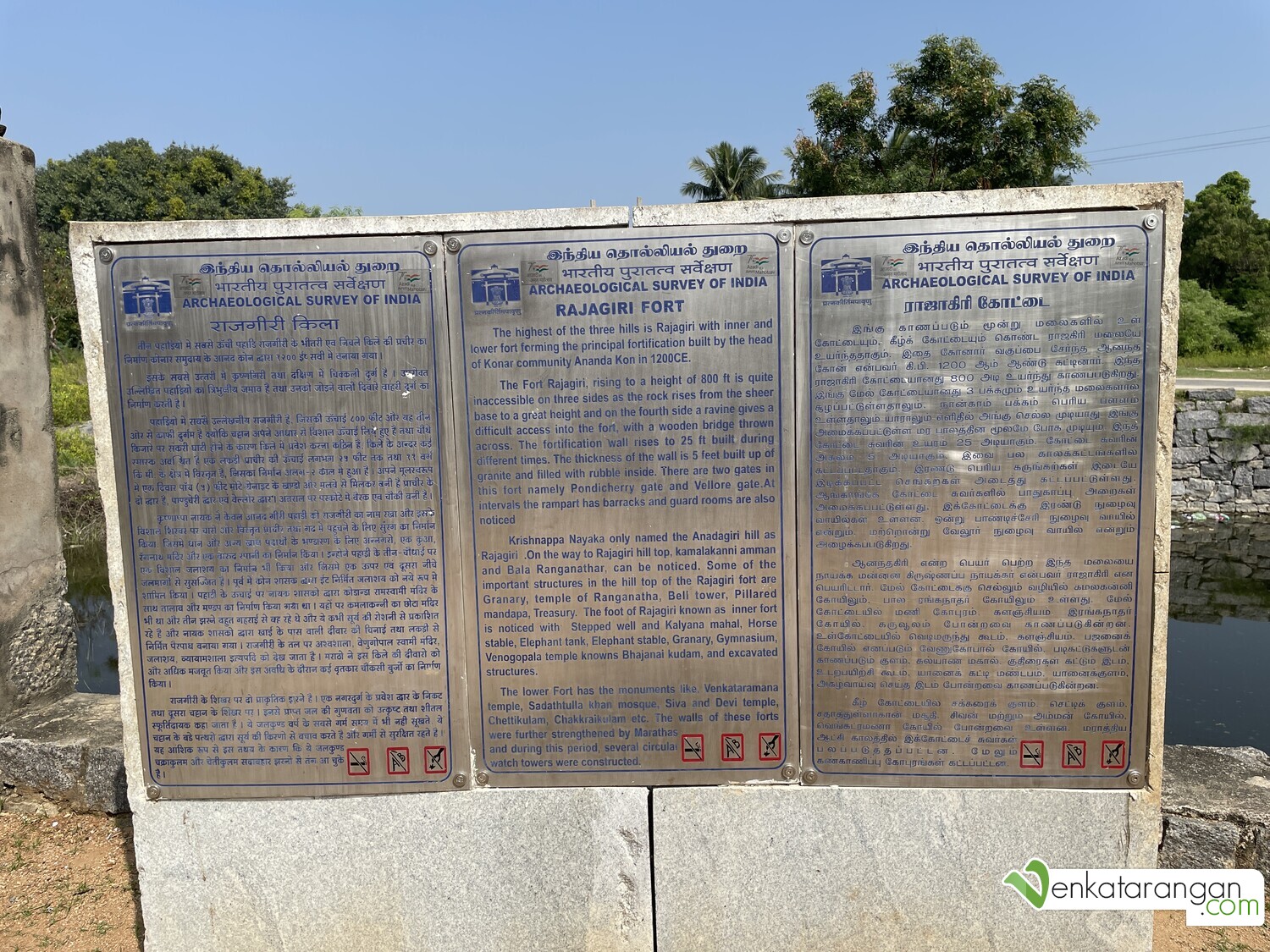
Fort Rajagiri rises to a height of 800 feet and was built by Ananda Kon in 1200 CE. The fortification wall rises to 25 ft and has a thickness of 5 feet built up of granite and filled with rubble inside
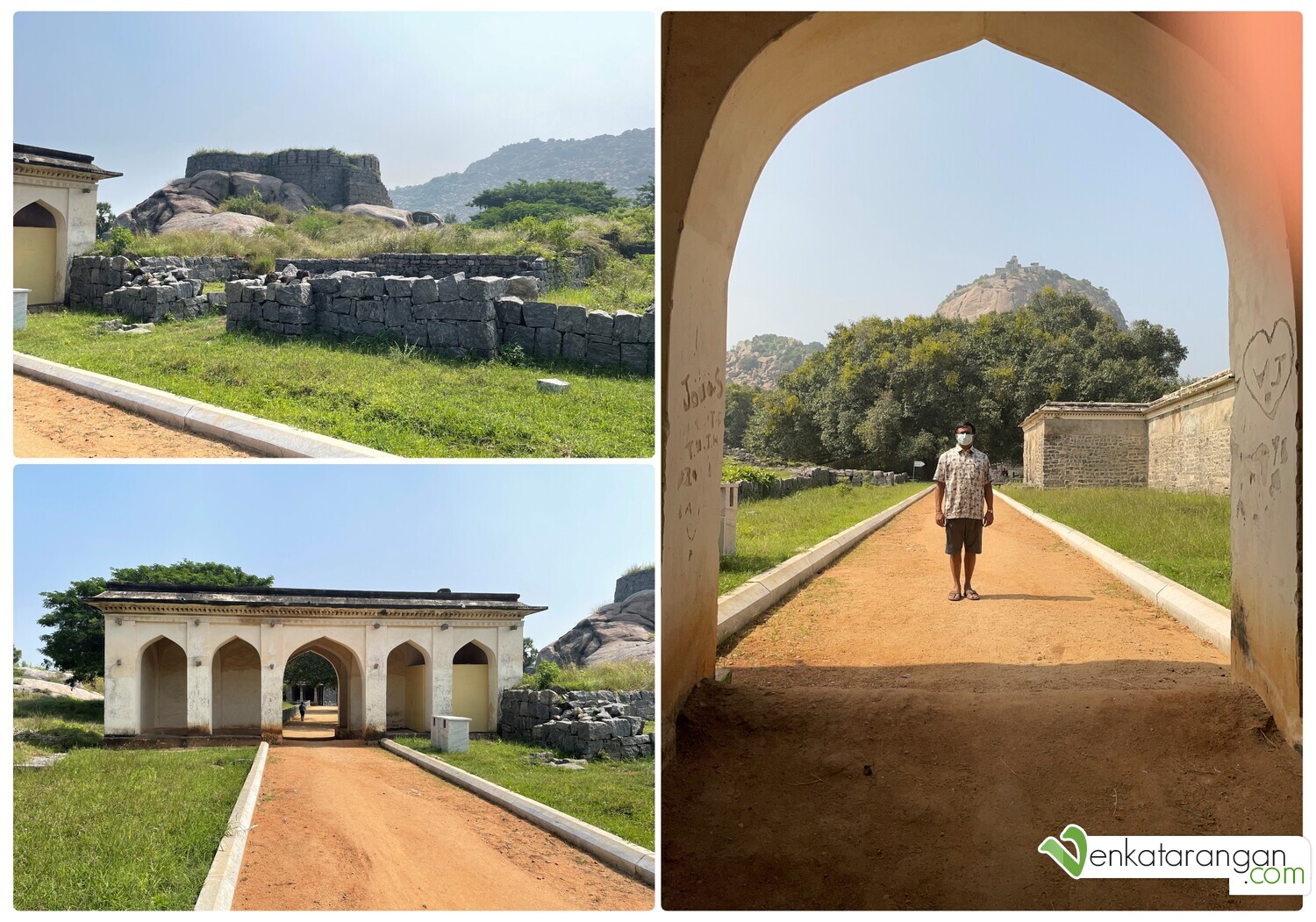
After you enter the gates you encounter a few standing structures and a lot of ruins
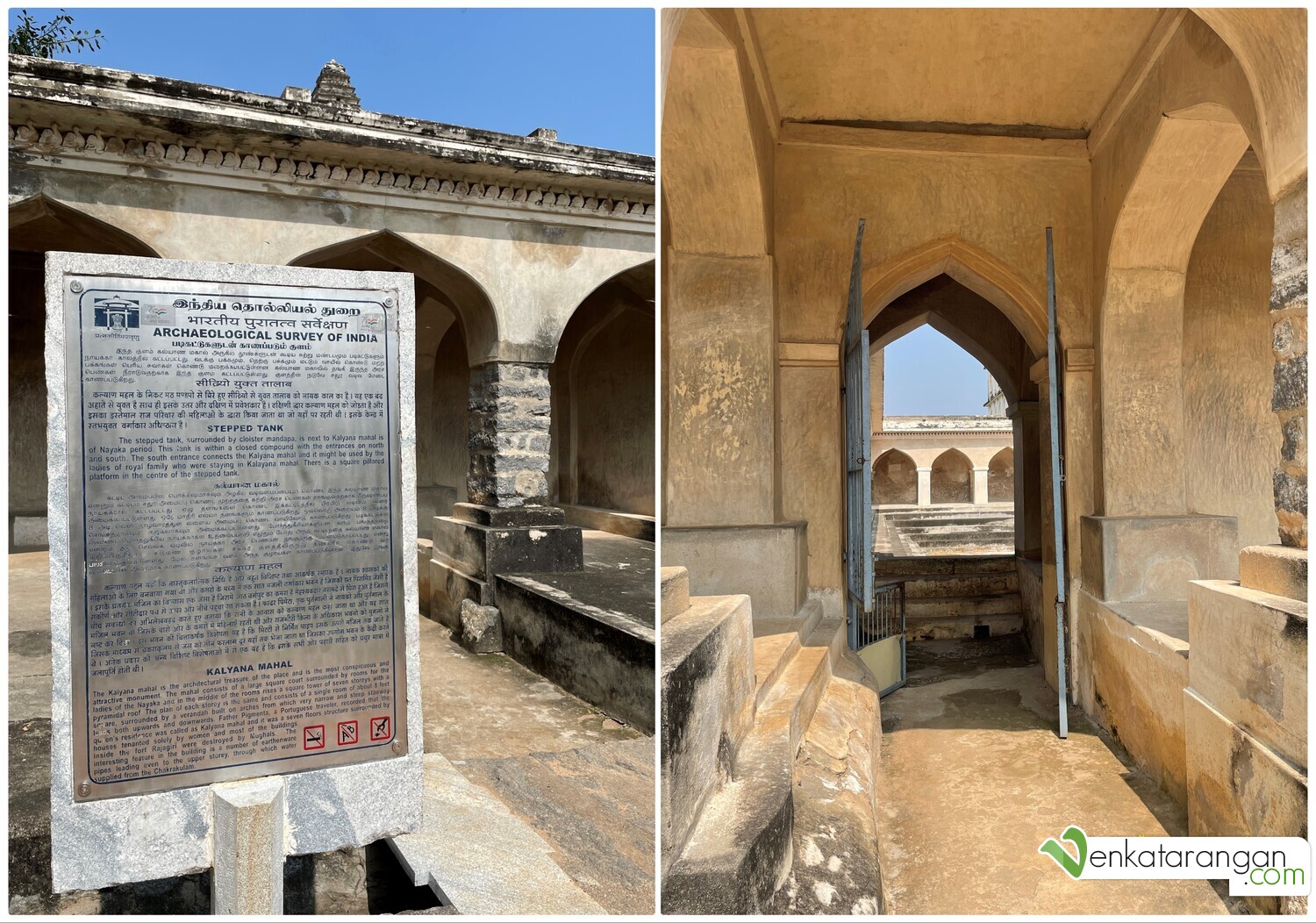
The first large structure we encounter on our right is the stepped tank and the Kalyana mahal – and are from the Nayaka period – the tank was used by the ladies of the royal family who were staying in the Kalyana Mahal, which consists of a large square court surrounded by rooms for the ladies
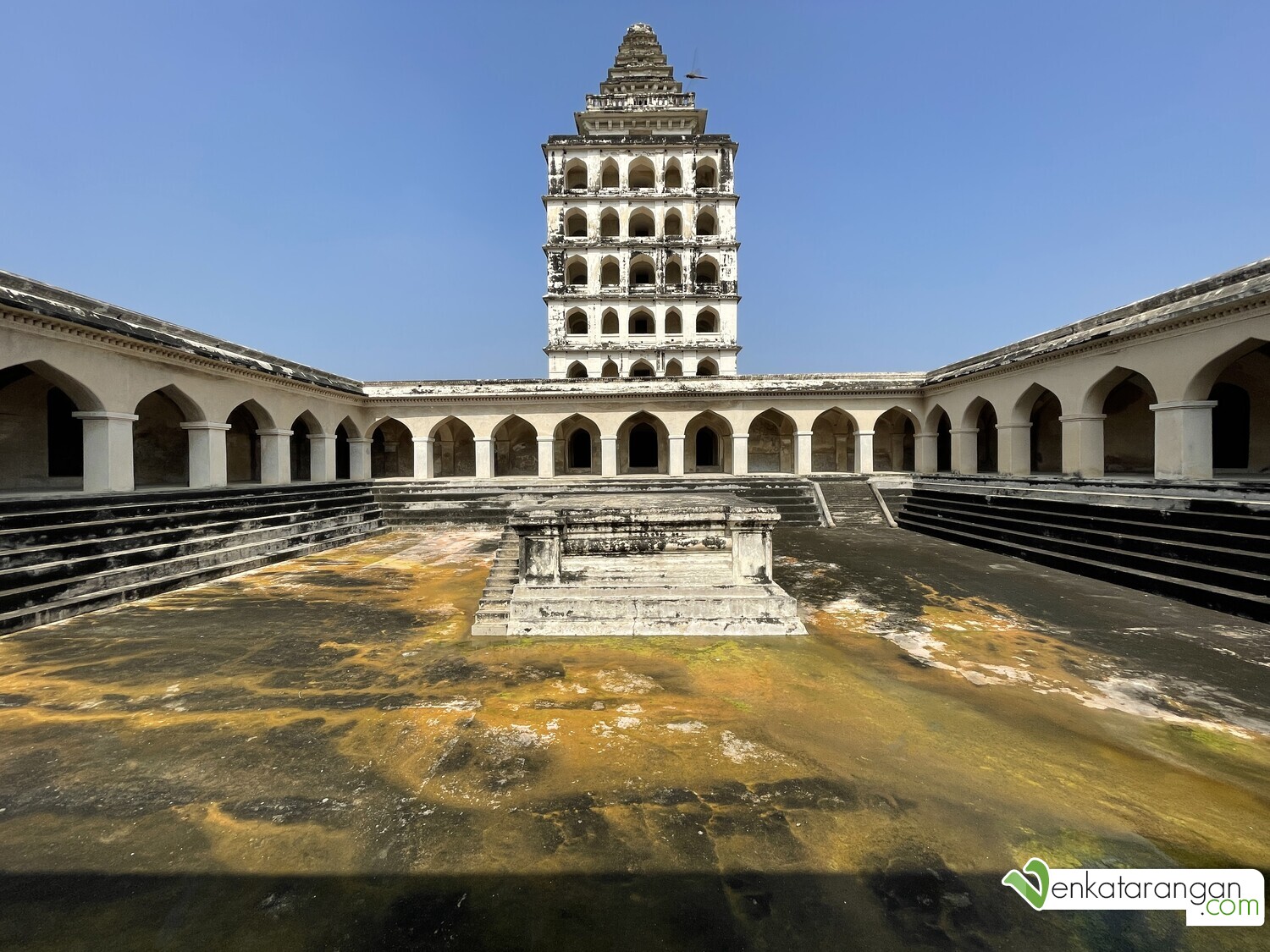
Stepped Tank – there is a square pillared platform in the centre
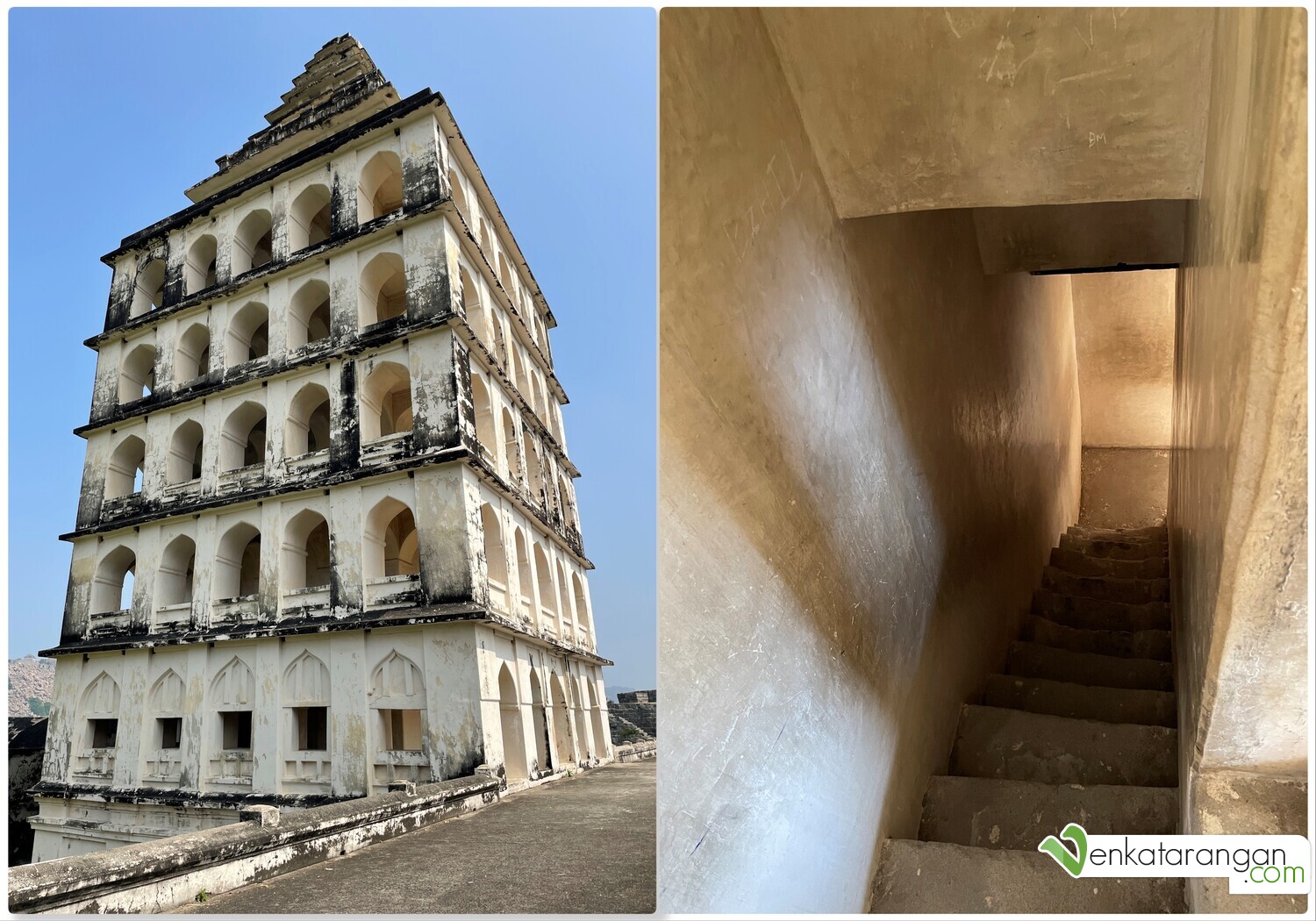
Kalyana Mahal is the architectural treasure of the place and the resemblance to the tower in Tanjore palace is obvious due to both being constructed during the Nayaka period. The picture on the right is one of the many staircases to go between the floors.
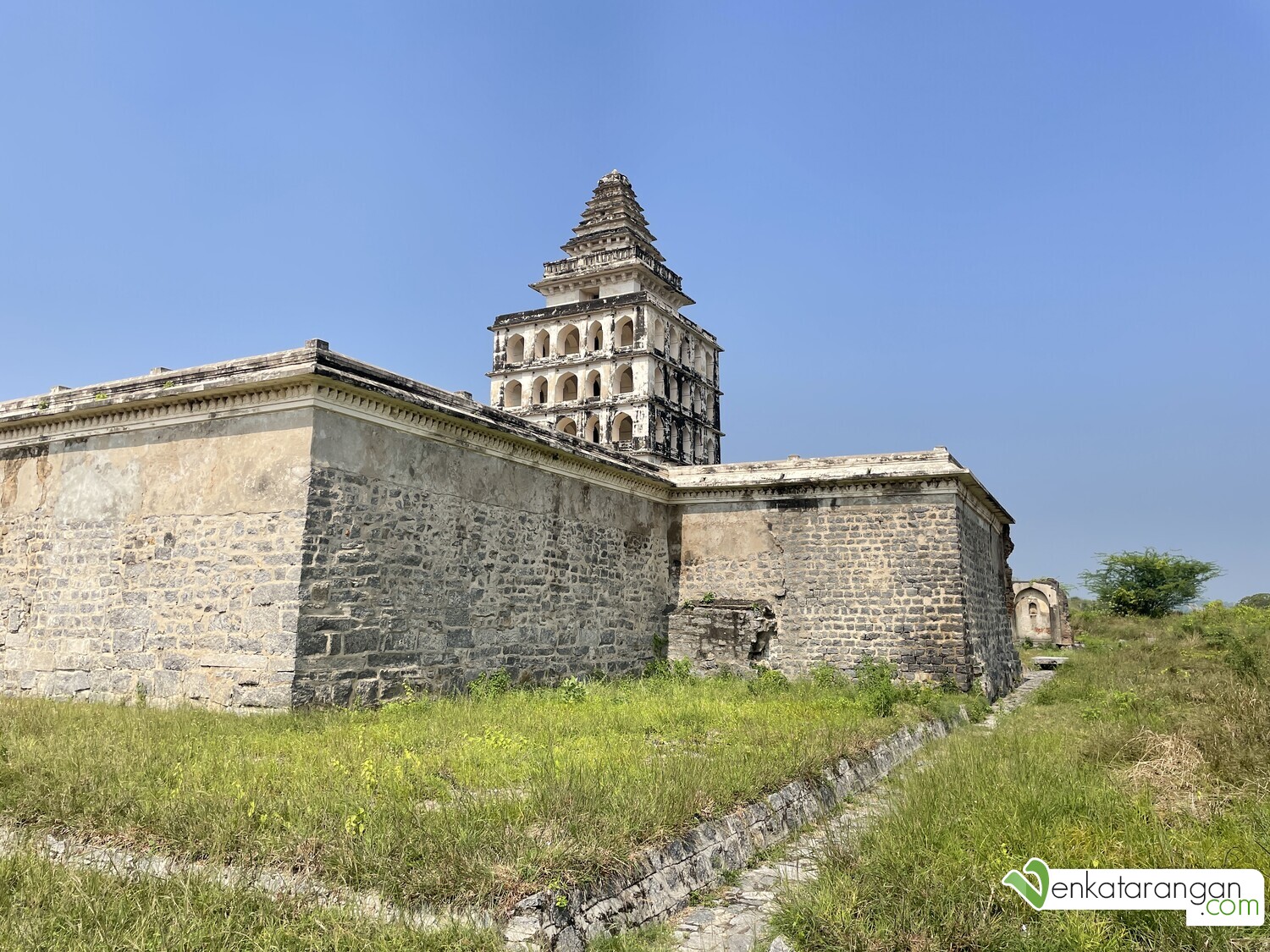
The rear view of the Kalyana Mahal
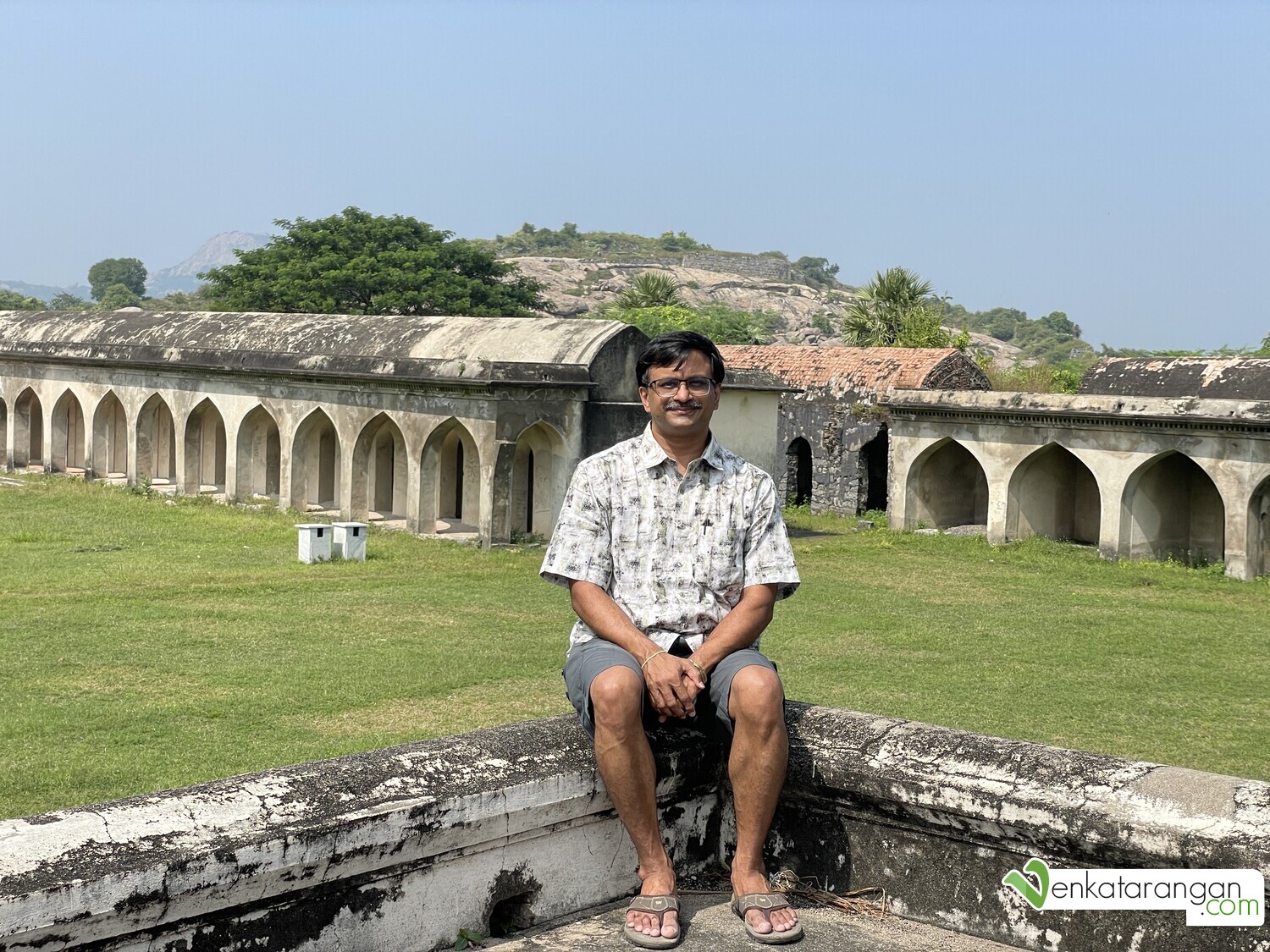
The royal stables and the quarters for the staff are behind where I was sitting

Gymnasium (உடற்பயிற்சிக் கூடம்) – a long hall in east-west direction constructed out of granite stones – size is 26-metre x 9-metre with walls of 1.20-metre thickness
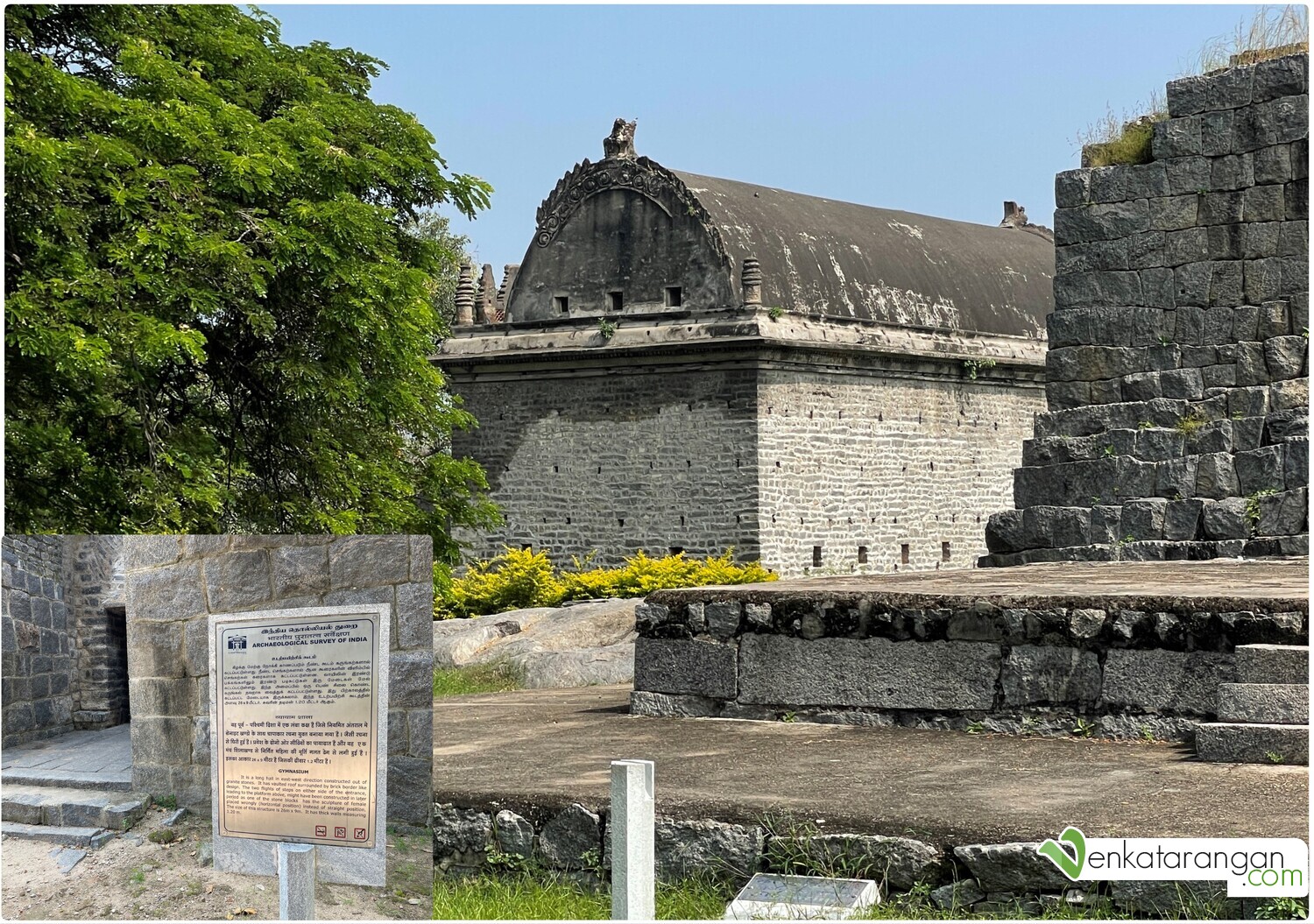
The rear of the gymnasium complex
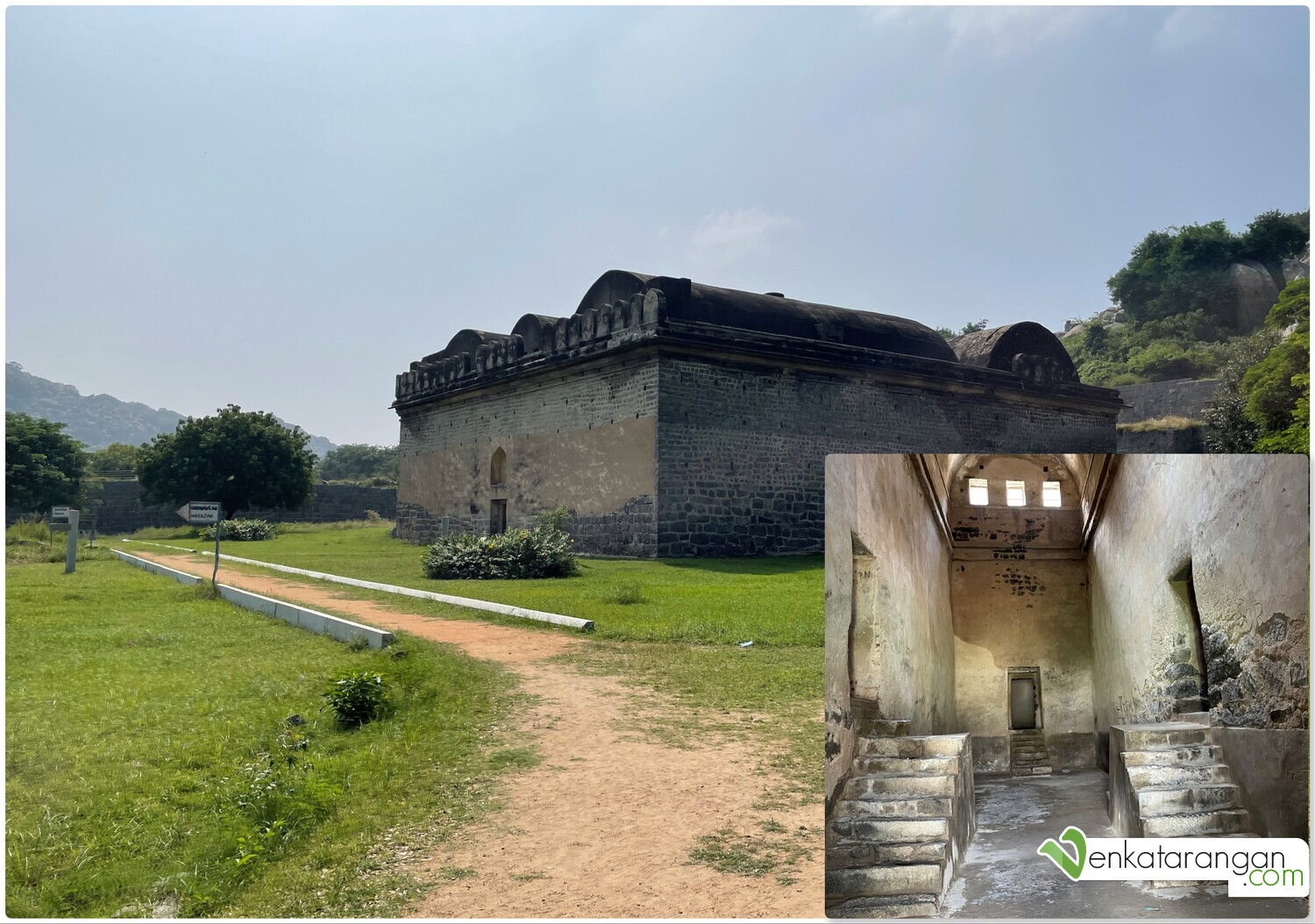
View of the granaries outer and interior
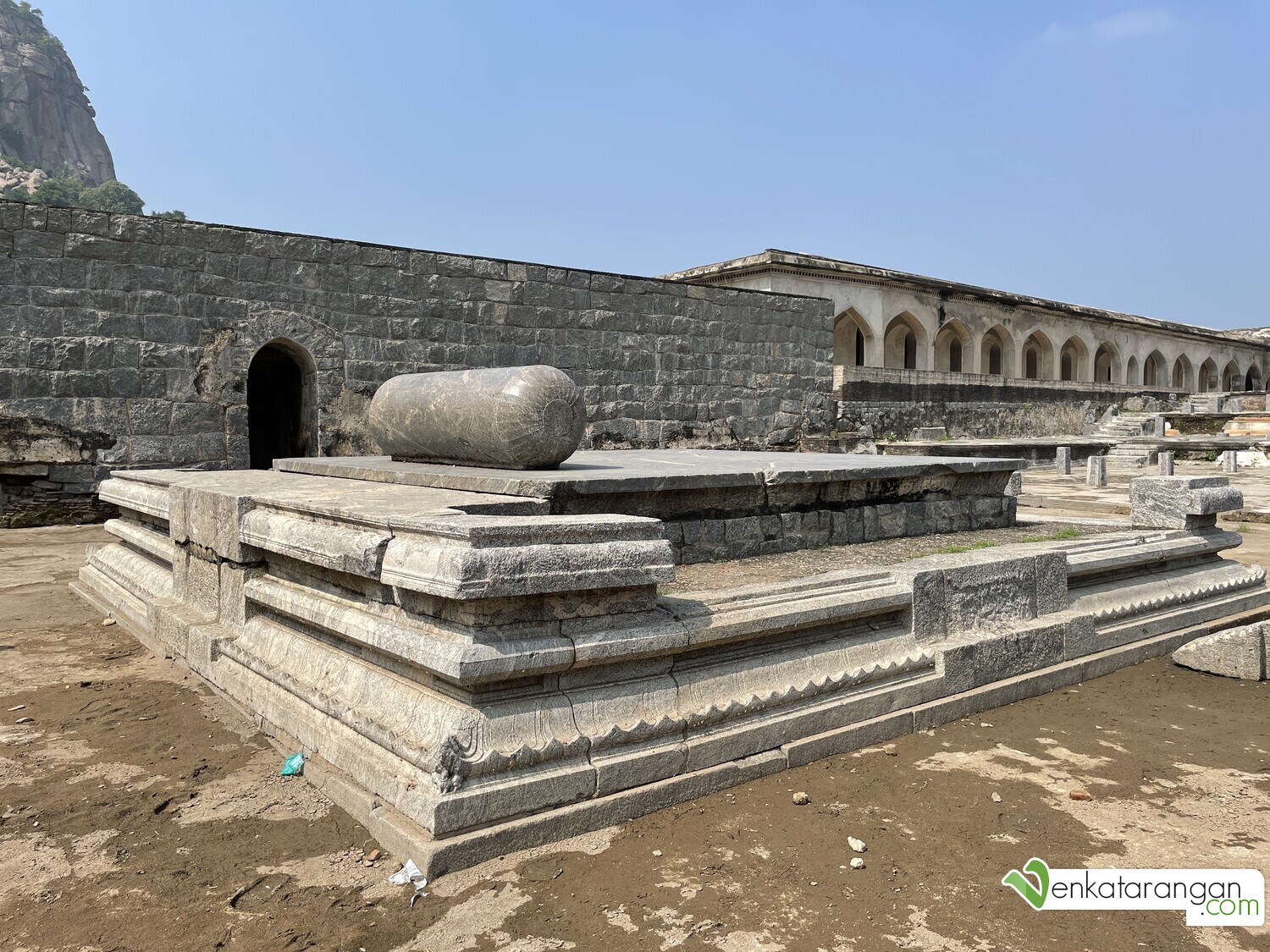
Runs from the royal palace that stood here

Ruins around the royal palace and the view of the Kalyana mahal in the bottom-right picture

Spiral staircase in the ruins of the royal palace
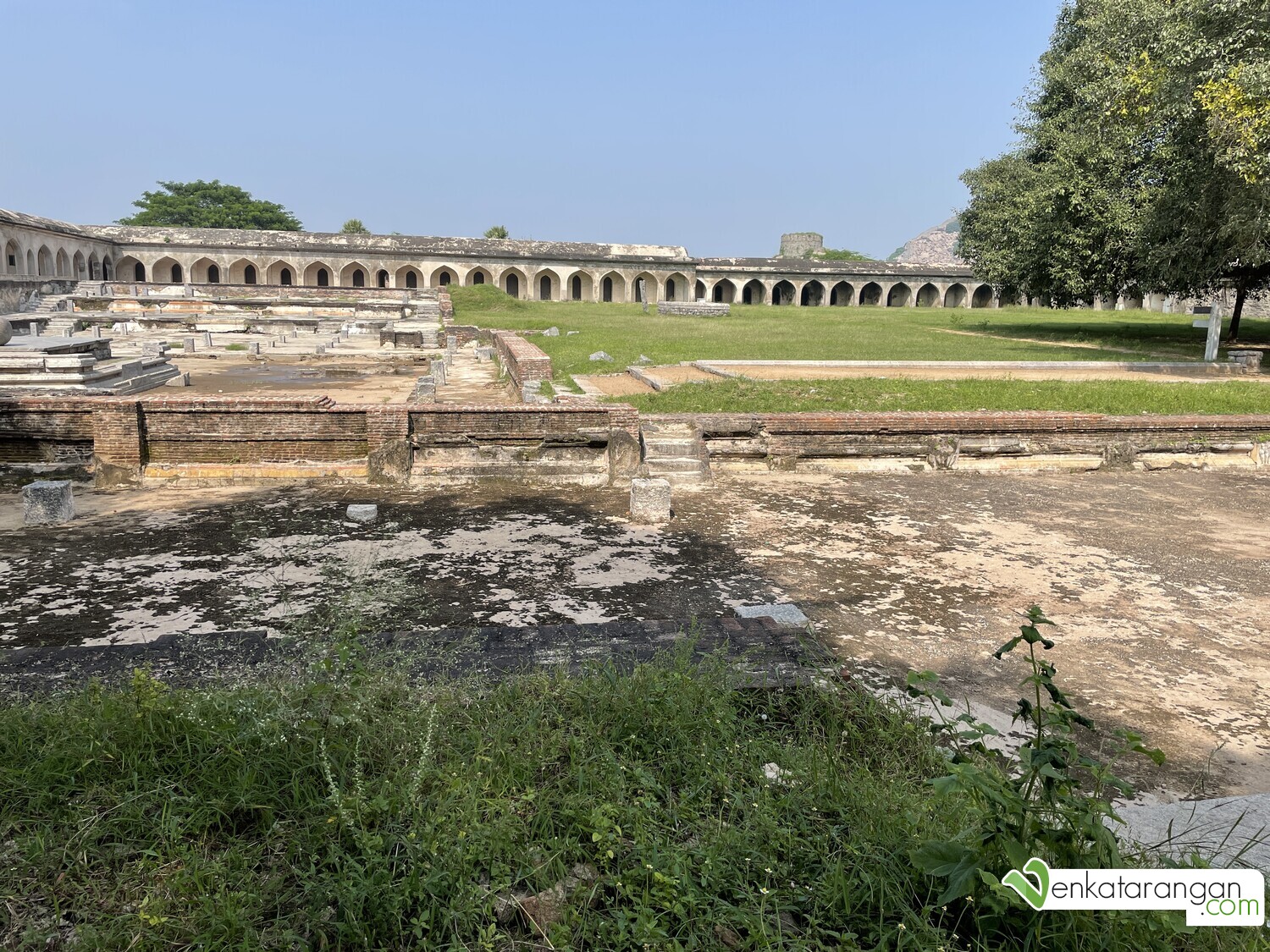
Another view of the royal stables and quarters
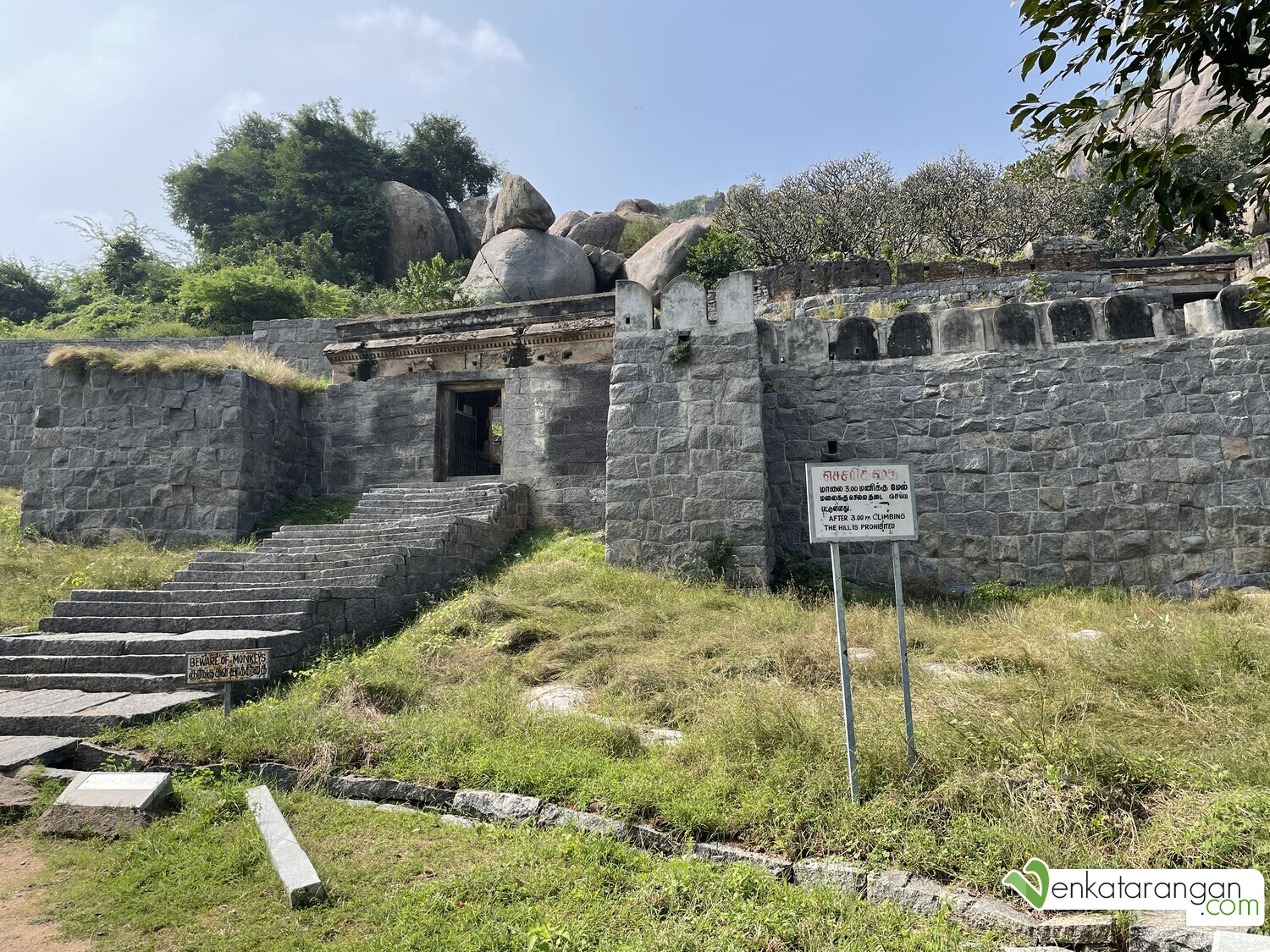
The entrance to the trek to reach the hilltop – remember you are not after 3 PM
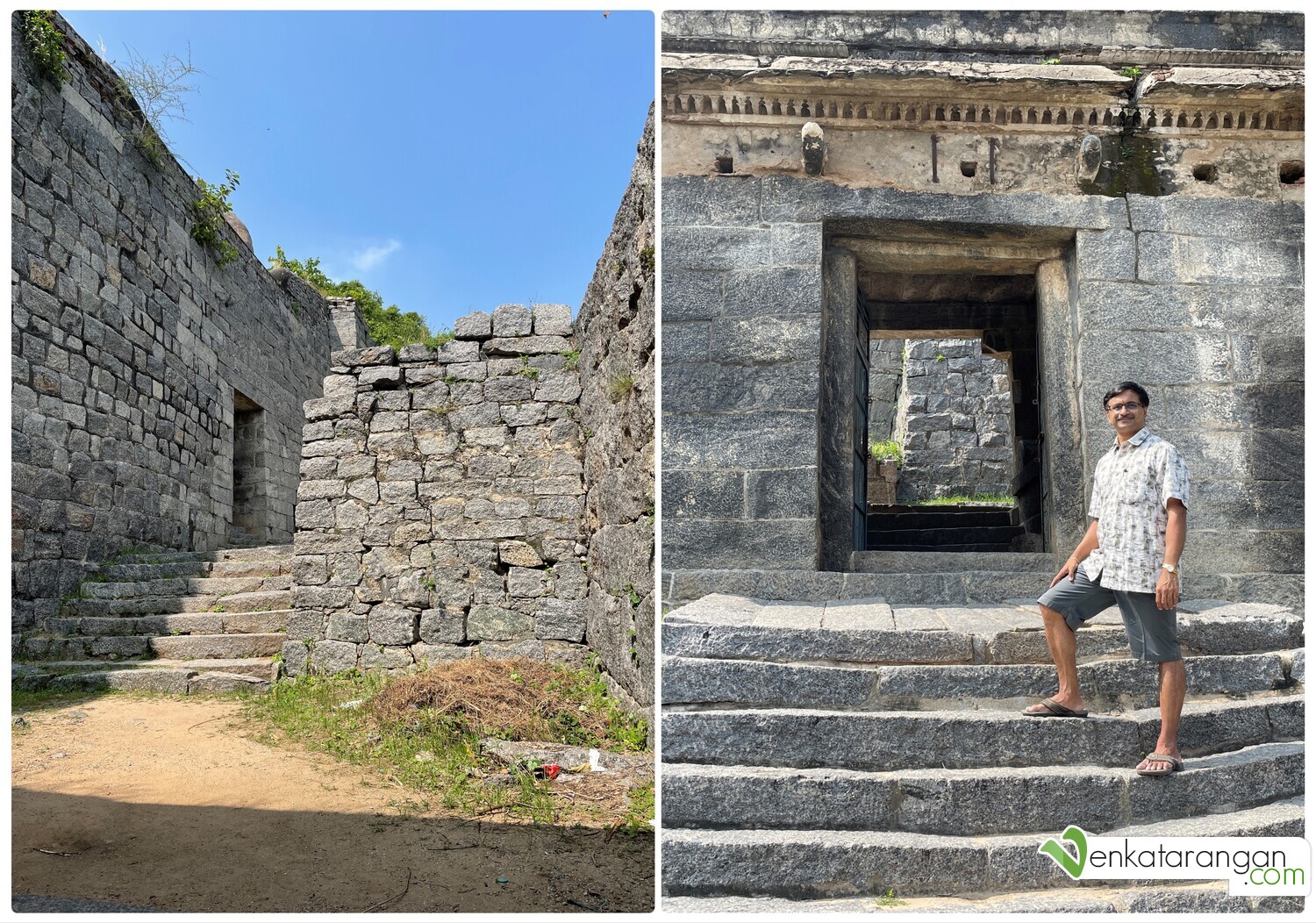
View of the fortifications at various levels of the fort and one of the many steps you need to climb

The path you need to trek to reach the hilltop
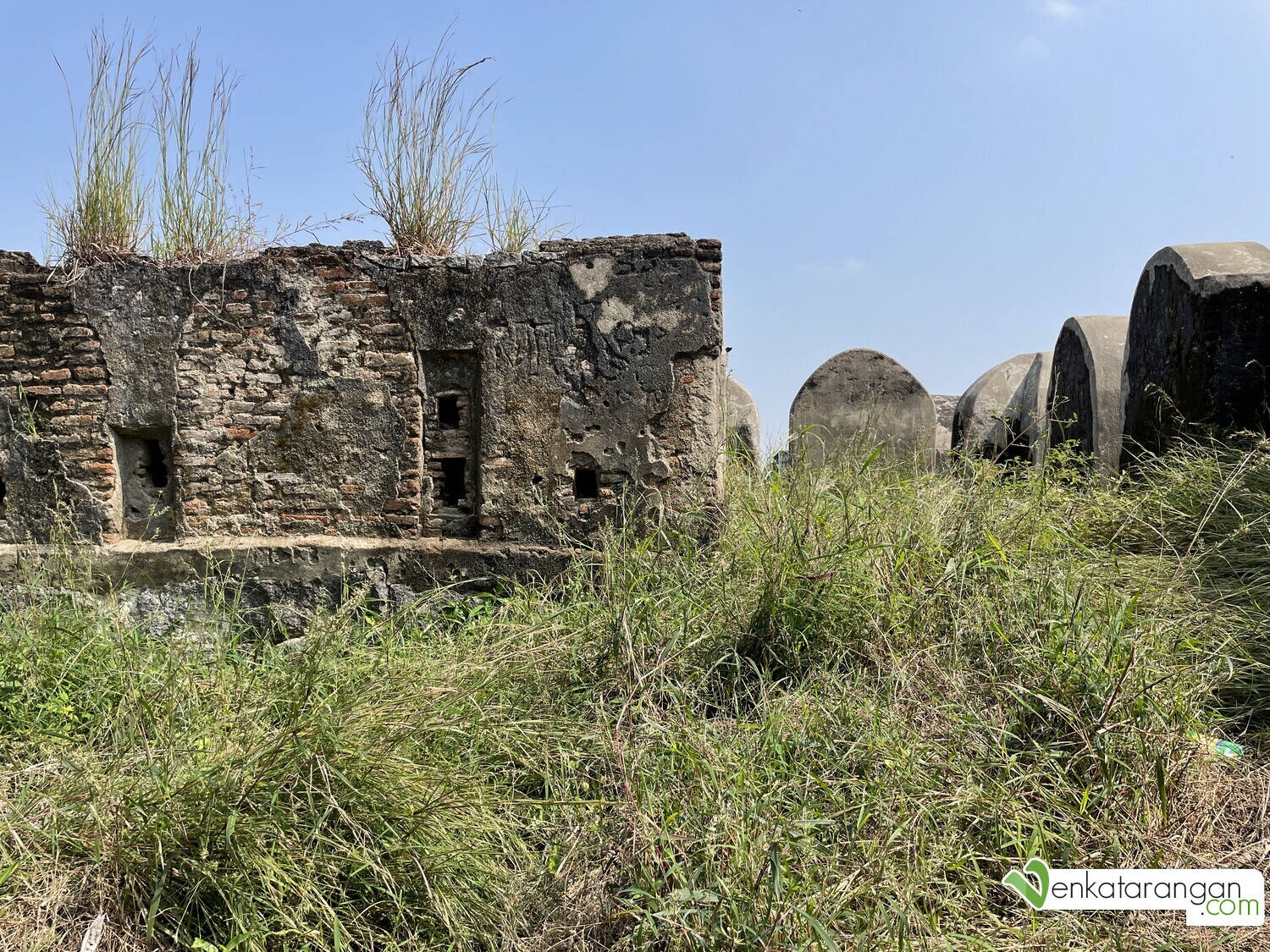
Ruins of the fortifications of the fort wall and the bastions
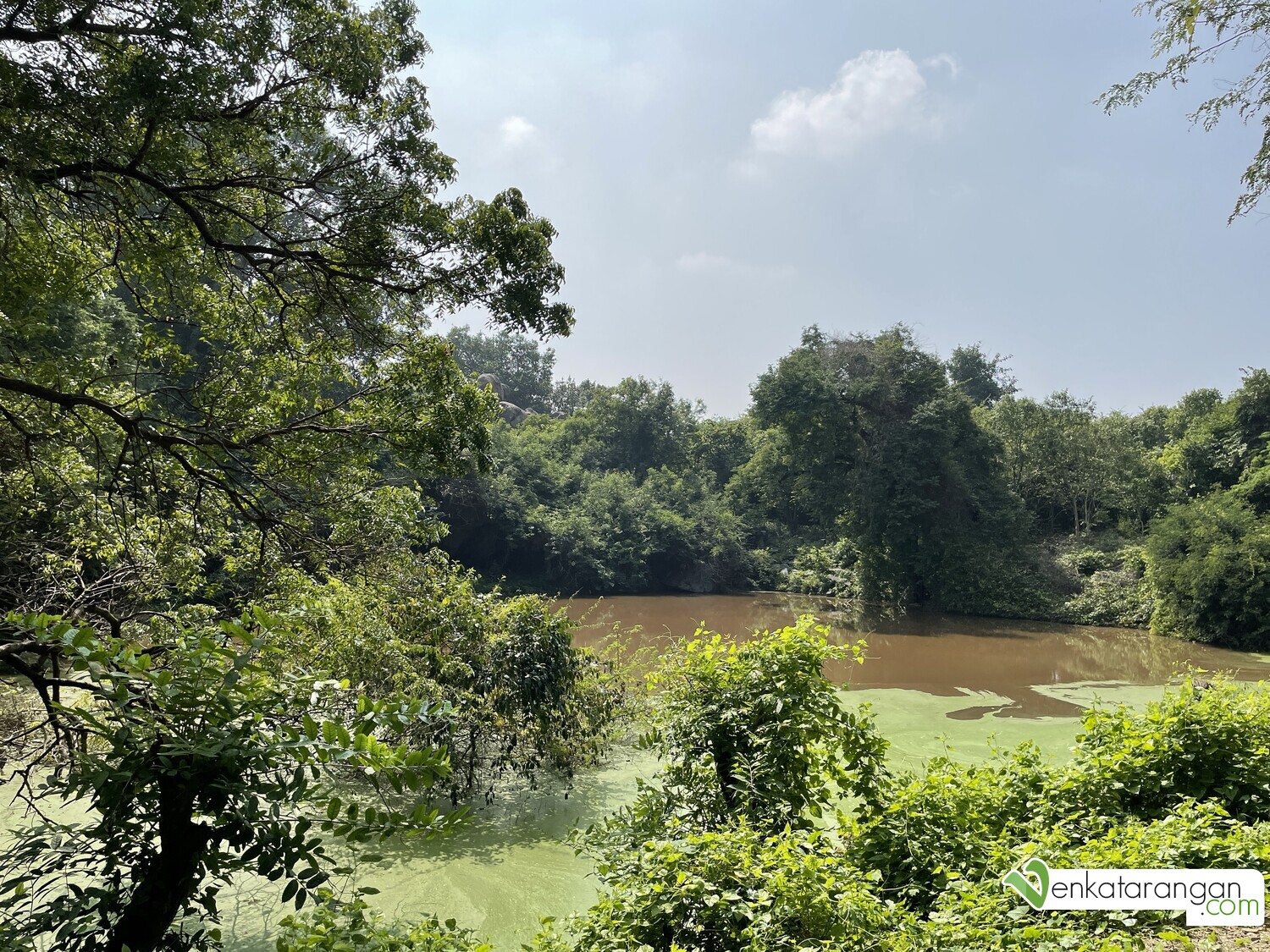
A large lake on the way to the top, the water was full of algae and stinking badly
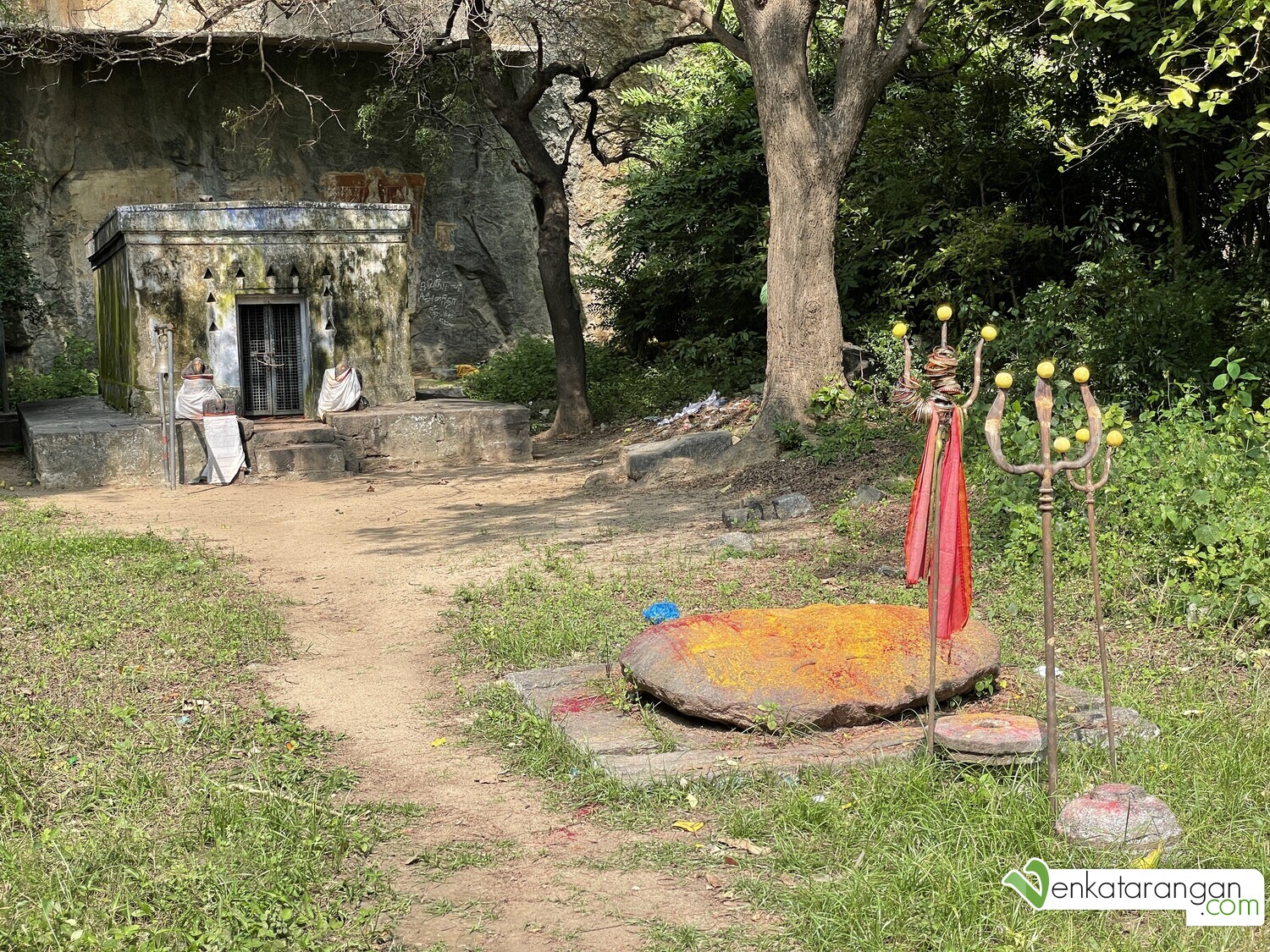
A temple to a deity on the way to the top
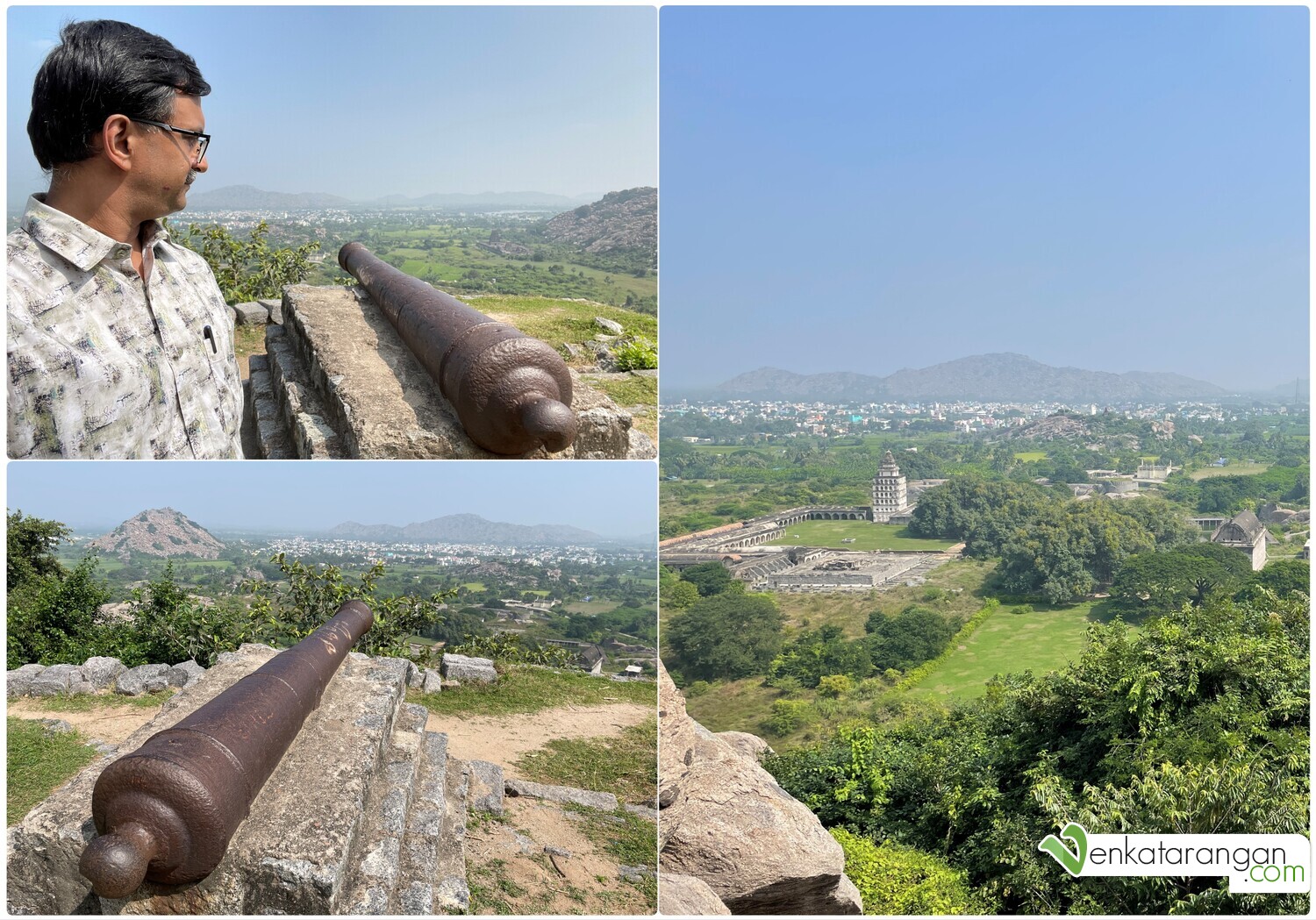
A large cannon – Rajagiri fort, Gingee
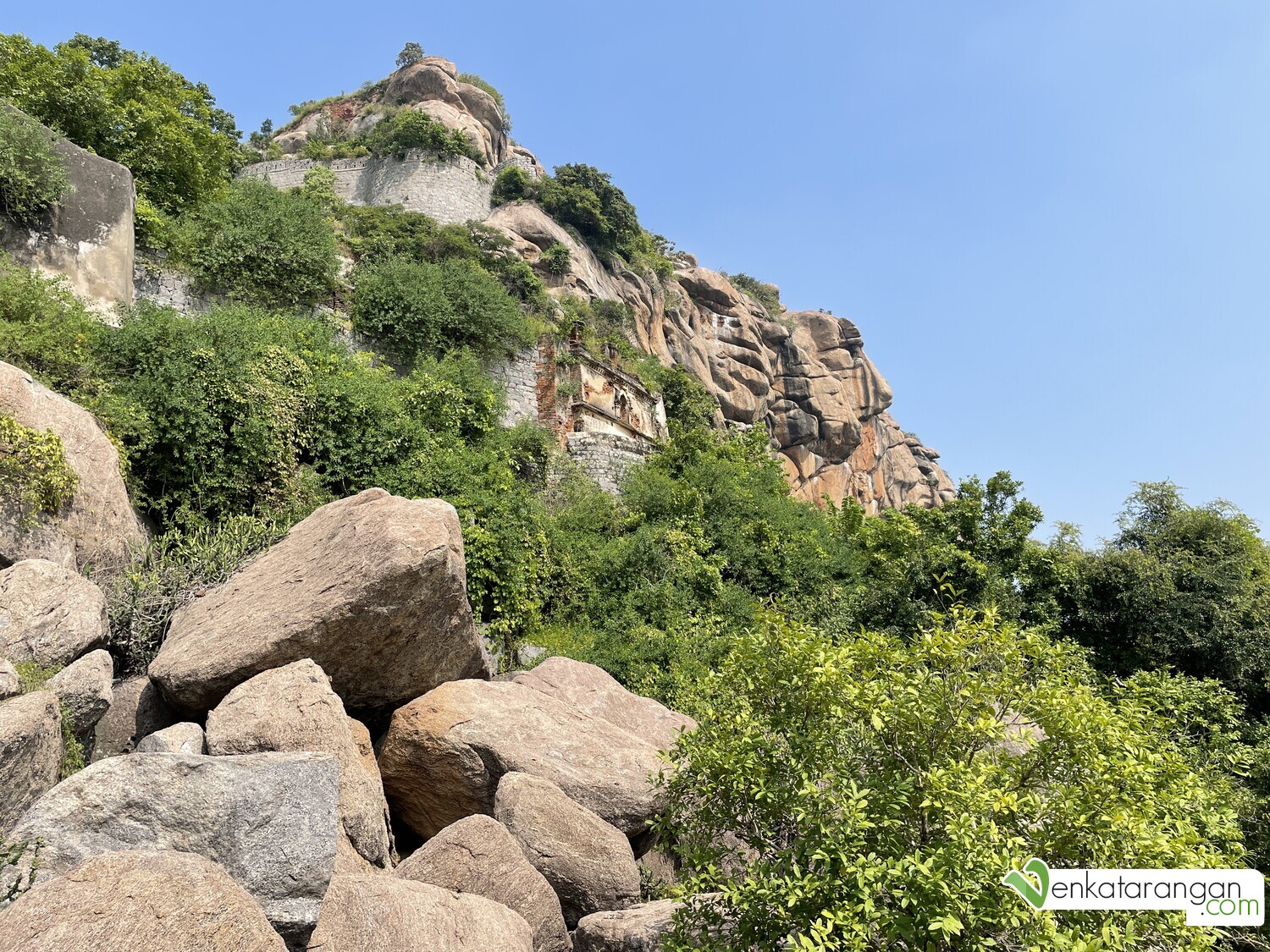
View of fort walls at various levels


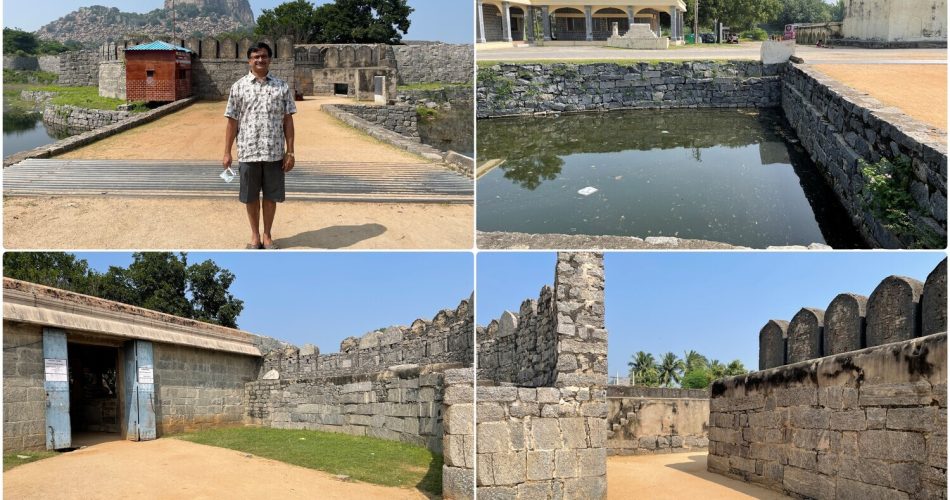
Comments